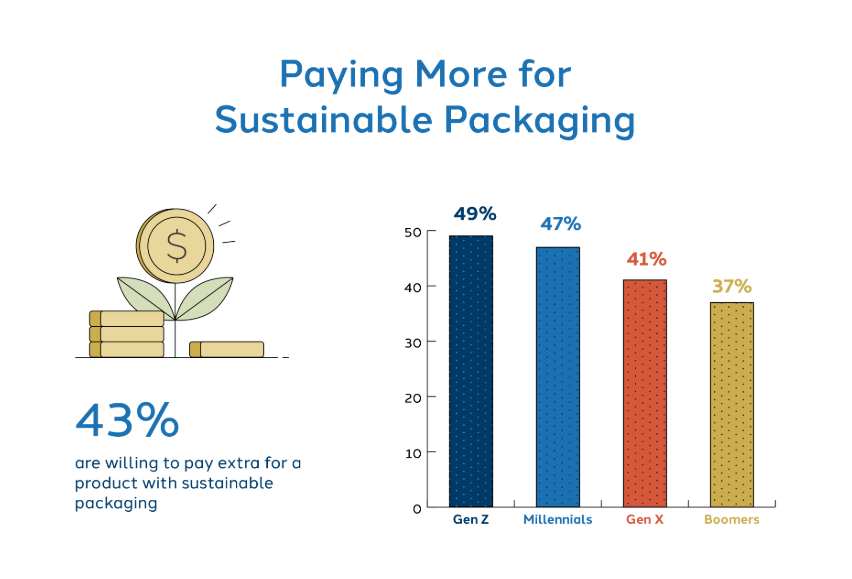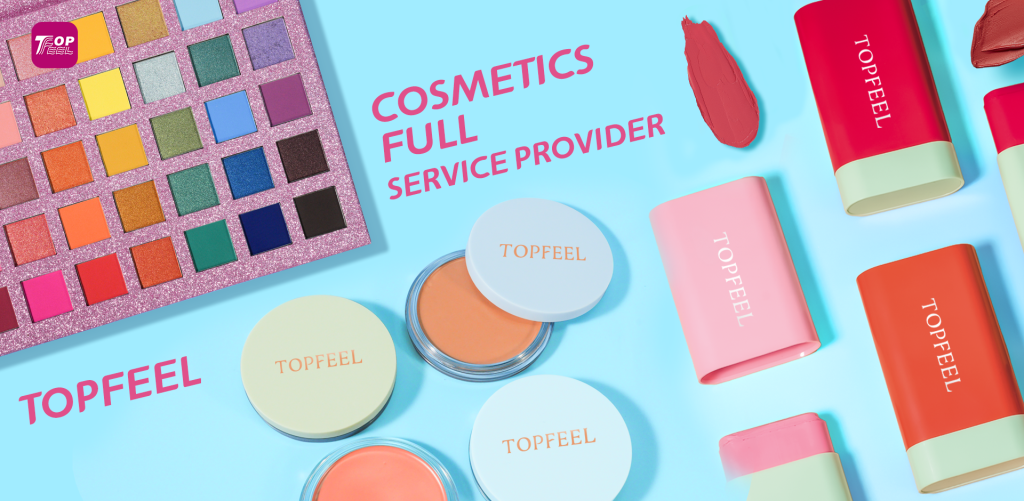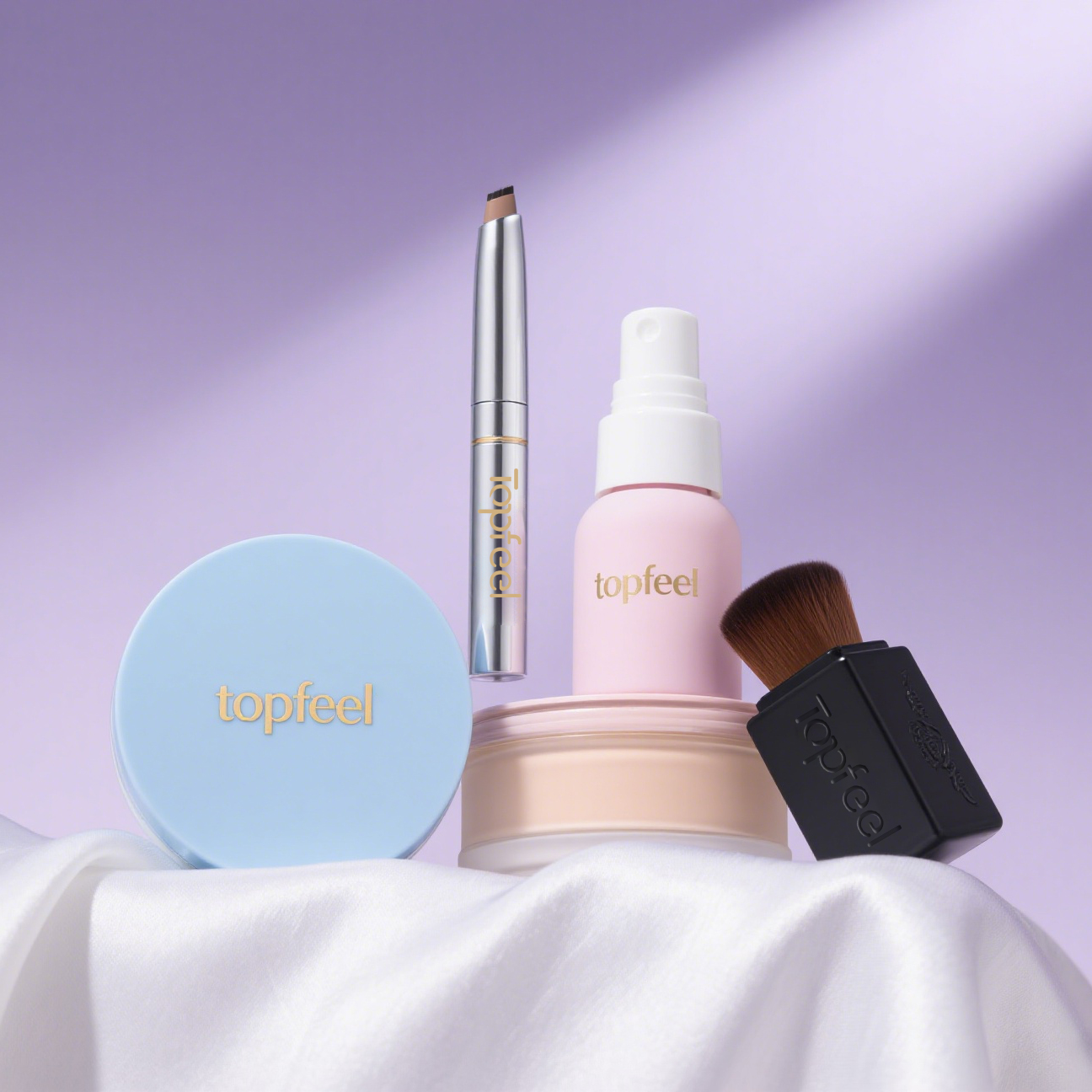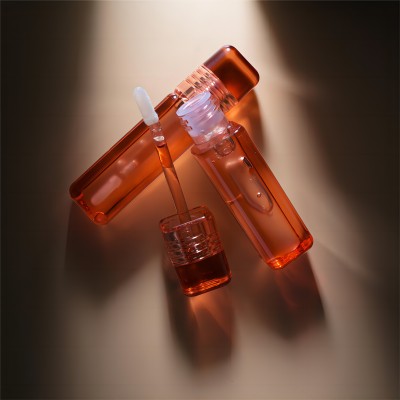What Brands Should Know About Sustainable Cosmetic Packaging Trends
Running a cosmetics company today means keeping up with a world that changes fast. People don’t just want great makeup or skincare. They also want products that don’t harm the Earth. According to the Shorr Packaging 2025 report, 90% of consumers prefer to buy products with environmentally friendly packaging, 54% have consciously chosen sustainable packaging products in the past 6 months, and 43% are willing to pay a premium for it. At Topfeel, we know it’s tough to meet these wishes while keeping your brand strong and making money. Sustainable cosmetic packaging isn’t just a fun idea—it’s something you need to do. This guide shares the latest ideas, easy design tips, important rules, and new tools for sustainable cosmetic packaging. We give simple steps to help your brand stand out in this green-focused world.

Key Trends in Sustainable Cosmetic Packaging
The push for eco-friendly packaging has brought out cool ideas. From reused materials to designs you can use again, these trends make it easier for companies to be green. Let’s check out the biggest changes happening now.
The Rise of Post-Consumer Recycled (PCR) Materials
Post-consumer recycled (PCR) materials are shaking up cosmetic packaging. These come from plastics people have already used and recycled. Using PCR means less new plastic and less trash piling up.
Benefits of Using PCR in Cosmetic Packaging
- Less Harm to Nature: PCR cuts down on pollution compared to new plastic. It’s a planet-friendly choice.
- People Like It: Customers admire brands that use recycled stuff. It makes your brand look good.
- Saves Resources: PCR reuses old plastics. This helps save things like oil.
Challenges and Solutions for Implementing PCR
|
Challenge |
Solution |
|
Hard to find good PCR |
Team up with trusted suppliers like Topfeel Group to get steady PCR materials. |
|
Costs more at first |
Fix supply chains to save cash over time. |
|
May not look pretty |
Use fun designs to make PCR packaging look nice. |
The Popularity of Refillable and Reusable Packaging
Refillable and reusable packaging is getting really popular. Companies want to cut down on waste. These systems let people refill their products without tossing the containers. It’s all about reusing things instead of throwing them away.
Advantages for Brands and Consumers
- Saves Cash: Refill systems cost less for businesses. Customers also pay less for refills.
- Keeps People Coming Back: Refillable packaging makes customers want to buy from you again. It builds strong bonds.
- Good for the Earth: Reusable packaging cuts down on single-use plastics a lot.

Examples of Refillable Packaging Innovations
At Topfeel, we make cool refillable products. Our double-ended lip gloss tube lets people swap out product cartridges super easily. We also have magnetic refill pans for eyeshadows and modular compact cases. These make refilling quick and easy.
Biodegradable and Compostable Materials in Packaging
Biodegradable and compostable materials are awesome choices instead of regular plastics. They break down naturally. This means less junk in landfills.
Differences Between Biodegradable and Compostable Options
|
Material Type |
What It Means |
Time to Break Down |
|
Biodegradable |
Tiny bugs break it down |
Might take months or years |
|
Compostable |
Turns into healthy compost with the right setup |
Usually 3-6 months |
Environmental Impact of These Materials
Biodegradable and compostable packaging reduces the use of plastics made from fossil fuels. But you need the right systems to dispose of them properly. Companies can help by showing customers how to compost the right way. This makes the planet healthier.
The Role of Design in Sustainable Cosmetic Packaging
Design is super important for making green packaging that works well and looks good. Smart design cuts waste, makes products easy to use, and helps your brand shine.
Minimalist Packaging Designs to Cut Waste
Simple packaging uses less material but still does the job. It saves money and helps the planet. Our cute lip gloss tube with a ball on top is a perfect example. It’s slim, light, and super green.
Clear Labeling for Transparency and Sustainability
Clear labels tell people how to recycle, where materials come from, and how to throw away packaging. Adding QR codes to labels can link to info about your green efforts. This builds trust with shoppers who care about nature.
Industry practice
Pai Skincare (British skincare brand) successfully reduced the use of virgin plastic by 35% and introduced PCR and degradable material packaging.
L’Occitane uses a mixture of 30% PCR plastic and sugarcane biopolymers to achieve a balance of “high-end appearance + environmentally friendly materials”.
Regulatory Considerations for Sustainable Cosmetic Packaging
Following rules around the world and in specific places is really important for companies using green packaging. It helps you sell products without getting into trouble.
Compliance with Global Sustainability Standards
Standards like ISO 14001 show companies how to be eco-friendly. Certifications like FSC for paper packaging prove you care about sustainability. At Topfeel, we make sure our products follow these standards. This gives our partners confidence.
How Technology is Driving Innovation in Sustainable Packaging
New tools are making sustainable cosmetic packaging even better. They help companies make green solutions that work well.
Advanced Manufacturing Techniques for Eco-Friendly Materials
Modern ways, like using bio-based resins in injection molding, let Topfeel make strong, green packaging. Our lotion pump bottles are made this way. They use less energy and make less waste when produced.
Digital Tools for Tracking Sustainability Metrics
Tools like lifecycle assessment software let companies check things like pollution and recycling rates. These numbers help businesses make smarter choices to make their packaging greener.

Topfeel: A Trusted Partner in Sustainable Cosmetic Packaging Solutions
At Topfeel Group, we’re all about helping brands meet their green goals with great cosmetic packaging. Since 2009, we’ve worked on eco-friendly packaging that follows global rules and meets what customers want.
FAQs on Sustainable Cosmetic Packaging Trends
Q1 What are the most common materials used in sustainable cosmetic packaging?
A1 You’ll often see materials like post-consumer recycled (PCR) plastics, biodegradable polymers like PLA, compostable stuff like bamboo, and glass. These cut down on harm to nature while keeping packaging strong and nice-looking.
Q2 How can brands switch to sustainable packaging without spending too much?
A2 Team up with reliable suppliers like Topfeel to improve supply chains. Simple designs use less material, which saves cash. Buying in bulk helps too. Start with your best-selling products to make the change easier.
Q3 Are consumers willing to pay more for products with sustainable packaging?
A3 Yes, studies say 66% of shoppers are okay paying a bit more for green packaging. Younger folks, like Gen Z and Millennials, are really into this. Being open about your green work can explain the cost and build trust.









